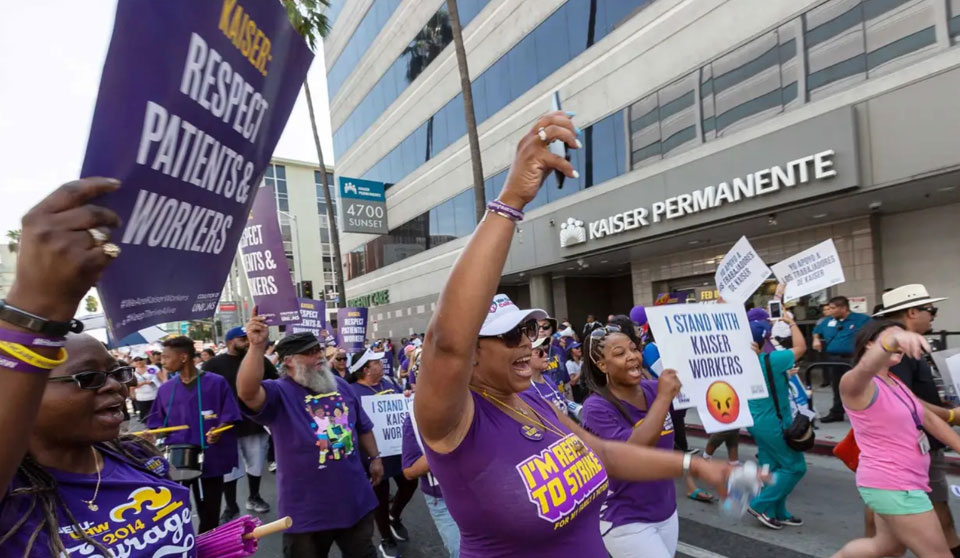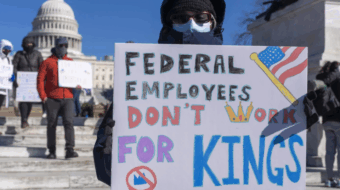
WASHINGTON —“Striketober” turned out to be the proverbial “canary in the coal mine,” when it came to unionization petitions, too.
The National Labor Relations Board reported a 57% increase in petitions for union recognition votes in the first half of fiscal 2022, which ended March 31. There were 1,174 election petitions in those six months, compared to 748 in the equivalent six months, Oct. 1, 2020-March 31, 2021, the fiscal year before.
Bosses responded, the NLRB added, by—among other tactics—breaking labor law more often. Workers, unions and members of the public may file labor law-breaking charges, formally called unfair labor practices.
Those numbers increased from 7,255 in the first six months of fiscal 2021 to 8,254 in the October 2021-March 31, 2022 period. That’s a 14% increase, the agency reported.
“While much has changed” since the Haymarket bombing, arrests and frame-up of pro-worker activists in Chicago in 1886, “several core dysfunctions of that older economic system persist,” the Economic Policy Institute says.
They feature “vast inequality, precarious low-wage labor, corporate concentration and soaring profits, wages barely keeping up with prices, widespread employer hostility to worker organizing, and pernicious forms of xenophobia and racism deployed to divide workers against each other.”
But there also “emerging upticks in worker organizing and growing interest in labor unions, after decades of declining union density driven by anti-worker economic policies and increasingly weak labor laws,” EPI reported.
One more uptick: The number of workers either locked out or forced to strike, according to the Bureau of Labor Statistics. There were 16 major lockouts or employer-forced strikes in calendar 2021, each involving at least 1,000 workers, BLS said.
BLS doesn’t distinguish between strikes, which employers usually force on unions, and lockouts, which employers formally impose. It lumps the two together. But those 16 big strikes and lockouts involved 80,700 workers, with 45,000 (56%) involving health care workers.
Some 40,000 of them were in the one-day forced strike by four unions, including the Service Employees, the California Nurses Association and the United Health Care Workers-West, against Kaiser Permanente last November. Warrior Met’s lockout, which started last April 1 and continues, has cost 1,100 United Mine Workers members the most days lost from their jobs, 205,700 last year, and counting.
The BLS numbers are incomplete, however. The agency doesn’t count lockouts and forced strikes involving fewer than 1,000 workers. In 2021, many of those smaller struggles were at hospitals and nursing homes over lack of protection from the coronavirus.










